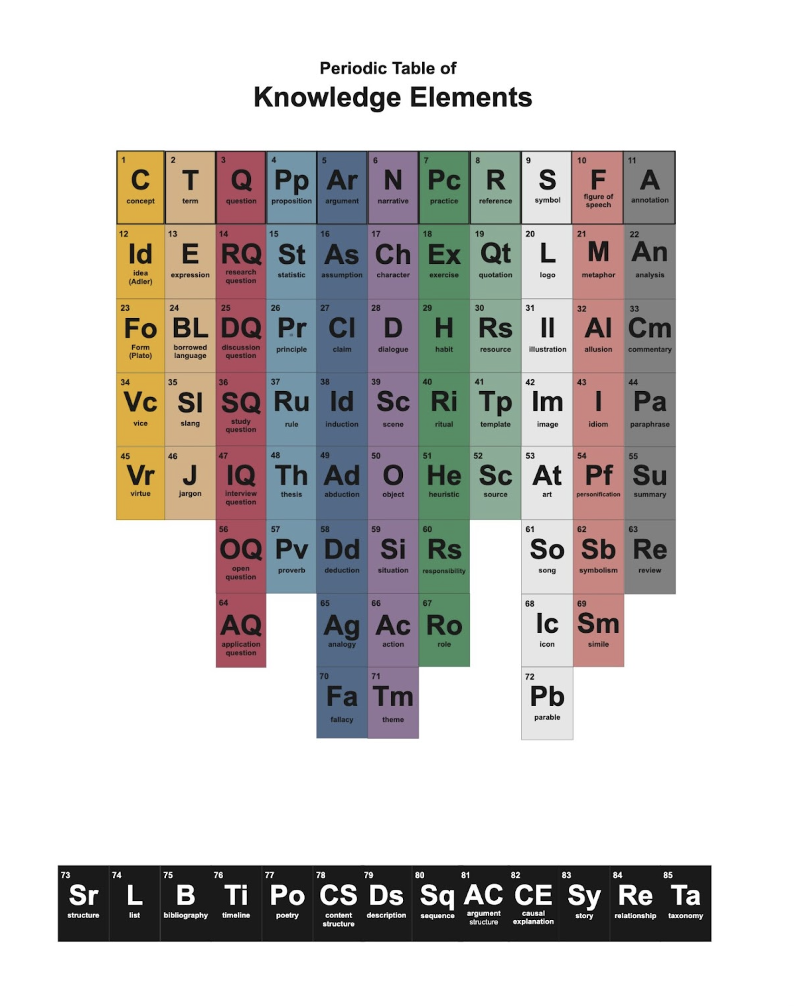Luke's Working Notes
Powered by 🌱Roam GardenLike the periodic table, elements are the fundamental building blocks of meaning.
A few years ago, I created a “Periodic Table of Knowledge Elements”. There were 12 categories (now cut to 8) and 85 elements (now expanded to 118). But the seeds are there.

The elements in Book 1 are fundamental units of thought and communication. Meaning that every complex form of human discourse can (theoretically) be broken down into these basic elements.
They are also discovered, not invented. I compiled this list of elements in the wild from reading books, essays, blog posts, news accounts, and social media posts covering many different genres: history, fiction, science, philosophy, theology, memoir, poetry, etc. This also hints at the possibility of discovering new or overlooked elements in the future.
Like chemistry's periodic table, this framework offers three levels of understanding:
The elements are fundamental units of thought and communication that can be discovered and categorized
The patterns are like compounds or substances - reliable combinations of elements that can be used to build a worldview
The structures are like artifacts - complete works that demonstrate how elements and compounds function together in the real world
Referenced in
About these Notes
Most of my notes will be one of these three types, which naturally build on each other. Elements combine to form patterns, structures contain both elements and patterns. Like the periodic table, elements are the fundamental building blocks of meaning. Like music theory, patterns and structures harmonize elements into cohesive works.